Table of Contents
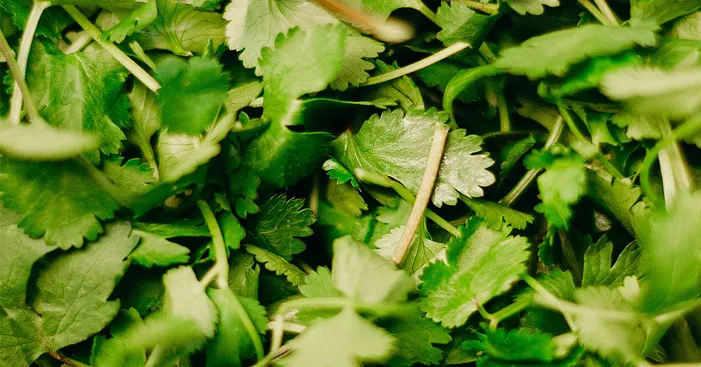
Italian parsley, also called flat-leaf parsley, is an aromatic plant widely used in Mediterranean cuisine.
But did you know that it also has many health benefits?
Indeed, Italian parsley is rich in vitamins, minerals, antioxidants, and essential oils.
It can help prevent or relieve various ailments, such as digestive disorders, urinary tract infections, anemia, or bad breath.
In this article, we will present you the benefits of Italian parsley and how to use it in your daily life.
General facts about Italian parsley:
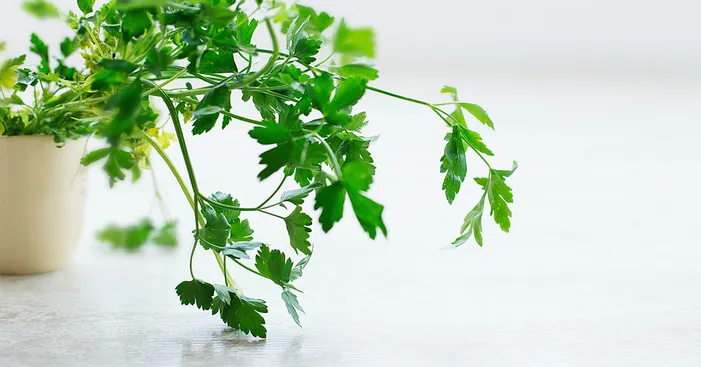
What is parsley?
Native to the Mediterranean basin, Italian parsley (Petroselinum crispum) is a plant of the Apiaceae family that lives for two years.
It is found in the wild in forests and meadows, especially in temperate climates which is why its cultivation is not recommended in cold countries.
The roots of this herb are thick and fleshy, of yellowish-white color.
While the leaves are arranged in a rosette form with a dark green color and toothed triangular edges.
Its flowers form an umbel with white petals in the shape of a pentagon, shaded greenish yellow.
They give them oval and flattened seeds, of grayish color which turn brown.
Italian parsley has many health benefits and is used in many recipes, such as seasoning ground or grilled meat.
Italian parsley: Historical overview
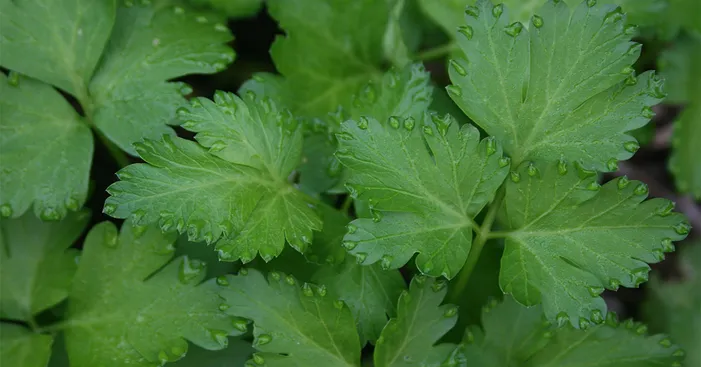
Italian parsley, which is used almost everywhere, has given rise to the famous proverb: “To be everywhere like parsley”.
Oshawa, the founder of macrobiotics, said that “We should never be without a bowl of chopped raw parsley on our table!
This plant was already known in ancient times and the Greeks used it not as a condiment, but as an ornament for graves, gardens, and especially for its therapeutic virtues against kidney and bladder problems and dental pain.
The Romans, for their part, used it mainly in cooking and to make crowns for the guests at banquets.
On the other hand, The Etruscans, neighbors of the Romans, attributed magical properties to the Italian parsley and made miraculous ointments with it.
Italian parsley varieties:
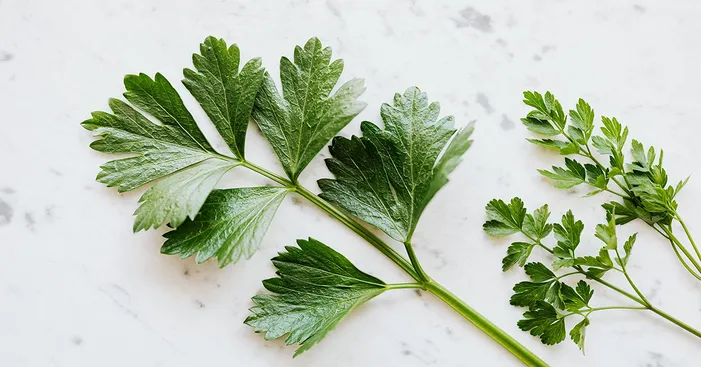
The Italian parsley (Petroselinum crispum) comes in several varieties, including:
- Hero: a variety that tolerates shade well. Its leaves are large and fleshy, and its fragrance is intense.
- Bogatyr: Can be grown outdoors or indoors.
- Carnival: Comes with a medium rosette and finely cut leaves on long stems.
- Hedgehog: This variety has emerald green leaves, ideal for decorating dishes. They have a sweet flavor and a very pleasant aroma.
- Perfumed: a variety with bright green leaves and a subtle taste and aroma.
Italian parsley nutritional values and health values:
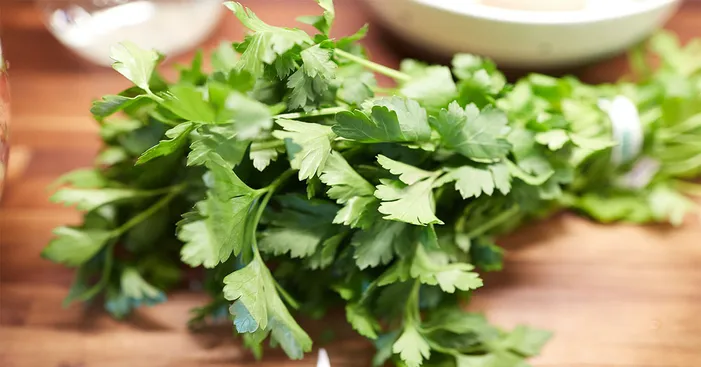
To preserve all the virtues of its leaves, it is preferable to use raw parsley in the kitchen and the food every day.
It is an aromatic plant with many therapeutic and curative properties, thanks to its richness in vitamins and minerals, which are degraded with the heat of cooking.
A spoonful of chopped Italian parsley provides as much vitamin C as a small orange (i.e. two-thirds of the daily needs).
These data counts for 1 cup (60g) of chopped Italian parsley:
- Calories: 22
- Protein: 1.8g
- Carbs: 3.8g
- Dietary fibers: 2g
- Fats: 0.5g
- A vitamin: 28%
- C vitamin: 89%
- E vitamin: 3%
- K vitamin: 820%
- B1 vitamin: 4%
- B3 vitamin: 5%
- B6 vitamin: 3%
- B9 vitamin: 23%
- Calcium: 6%
- Copper: 10%
- Zinc: 6%
- Manganese: 4%
- Iron: 21%
- Magnesium: 7%
- Potassium: 7%
- Phosphorus: 3%
Health benefits:

Diuretic and hypotensive effect:
Thanks to this effect, it accelerates the healing of urinary tract infections and prevents the formation of stones in the bladder and kidneys, thanks to its depurative action.
It naturally cleans the kidneys and can fight urinary and bladder infections.
Moreover, the vitamin C present in parsley, associated with its diuretic effect, allows to reduce the blood pressure and maintains it stable throughout the day.
Immunostimulant and anti-inflammatory:
It strengthens the immune system and is an excellent adjuvant to eliminate the flu thanks to the synergistic action of vitamins A, C, folic acid, and niacin.
These are micronutrients that support the body’s defenses, opposing the action of pathogens.
It can also relieve inflammation (inflammation) in the body thanks to two essential oils: eugenol and myristicin.
Eye health:
Parsley contains three carotenoids that protect the eyes and promote good vision: lutein, beta-carotene, and zeaxanthin.
Lutein and zeaxanthin can prevent age-related macular degeneration.
Beta-carotene can be converted into vitamin A by the body, which is necessary to protect the cornea (the outermost layer of the eye) and the conjunctiva (the membrane that covers the front of the eye and the inside of the eyelids).
Parsley beautifies the skin:
Rich in vitamin C and antioxidants, Italian parsley has a powerful collagen effect, which brightens the skin and reduces spots and scars.
It also regulates sebum production, making it an effective acne remedy.
For a soothing mask, mix a few sprigs of parsley, 2 teaspoons of apple cider vinegar, and a few drops of honey: your skin will thank you
Eupeptic effect:
Parsley increases appetite and improves digestive function.
When eaten raw, it stimulates the secretion of gastric juices and reduces the formation of intestinal gas.
It promotes the assimilation of nutrients in the intestine thanks to the enzymes and fibers it contains.
Promotes hair growth:
The benefits of parsley stimulate hair growth through a simple massage with the fresh leaves of the medicinal plant.
In addition, this plant activates microcirculation and gives a strong and shiny appearance to dull hair. Therefore, it can be an excellent remedy for alopecia.
Antioxidant properties:
Parsley contains bioactive compounds that help counter the harmful effects of free radicals.
It is rich in flavonoids, powerful antioxidants that slow down cellular aging and prevent excessive pressure fluctuations that are dangerous to health.
But above all, parsley contains a lot of apigenin, an antioxidant that reinforces the action of other phyto-compounds.
It is also well endowed with lutein, an antioxidant that helps prevent age-related macular degeneration.
Parsley strengthens the brain:
Thanks to the potent flavone apenine, parsley promotes neuron formation and certain brain functions – such as memory and learning.
This plant compound has been shown to be effective in fighting neurodegenerative diseases such as schizophrenia, depression, Alzheimer’s disease, and Parkinson’s disease.
The extract of this plant stimulates cognitive abilities and improves attention and memory.
Other health benefits of Italian parsley:
- Strengthens the immune system.
- Contributes to the maintenance of the bone system thanks to vitamins A, B, C, and K.
- Facilitates the elimination of liquids by supporting renal function.
- Stimulates the work of the gall bladder and promotes detoxification of the body.
- Naturally regulates blood pressure.
- Useful for people suffering from hypertension.
- Rich in antioxidants, it has a general anti-inflammatory action for the body.
- Prevents the onset of serious diseases such as cancer (thanks to the antioxidant action).
- Improves digestion.
Precautions before you consume Italian parsley:

Just like any type of parsley, the Italian variety can be consumed regularly without major risk, provided that it is not abused.
Parsley does not usually cause side effects if used properly, however, contact allergic reactions may occur.
In addition, photodermatitis can occur if the freshly picked plant comes into prolonged contact with the skin.
It is best to avoid eating too much parsley as it can cause side effects such as anemia or liver problems.
Also, avoid consuming parsley during pregnancy as it can cause uterine contractions and bleeding.
If too much parsley essential oil is consumed or preparations containing a lot of essential oil are used, overdose or poisoning may occur.
Typical signs of poisoning are strong contraction of smooth muscles (especially those of the urinary tract, intestines, and uterus), anuria, bloody stools, hemorrhaging of mucous membranes, hemolysis, and cachexia.
The oil from its seeds can also cause allergic reactions on the skin and make it more sensitive to the sun.
Finally, parsley contains oxalic acid: it should not be abused in cases of gout, kidney stones, or deficiencies in minerals or other nutrients.
Using Italian parsley:
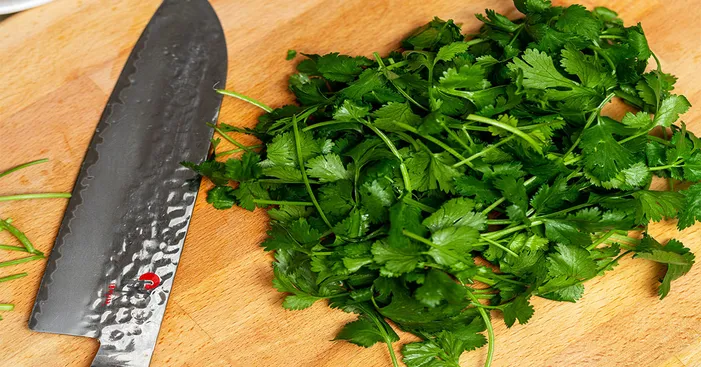
Parsley is more nutritious when eaten raw.
That’s why it should be added to dishes at the last minute, to enjoy its delicate aroma.
To preserve its essential oil, which gives it its fragrance and flavor, it should be added at the end of cooking.
Coarsely chopped, it is perfect for adding flavor to grilled meat or fish, or for garnishing boiled, steamed, or baked vegetables such as pumpkin, potatoes, carrots, zucchini, and eggplant.
Parsley leaves can also be added to cold rice or pasta salads, and paired with other raw vegetables (such as fennel, arugula, and cucumber) to make an appetizer before a starchy dish or a side dish for a protein dish.
In addition, it goes well with many foods of the Mediterranean diet, especially in sauces to accompany grilled meat and marinades.
It is a must in all fish dishes and canned vegetables.
Italian parsley is also present in many Middle Eastern recipes such as tabbouleh, a cold salad typical of Lebanon, Syria, and Jordan, based on bulgur or couscous, in which it is the main ingredient.
Italian Gremolata:
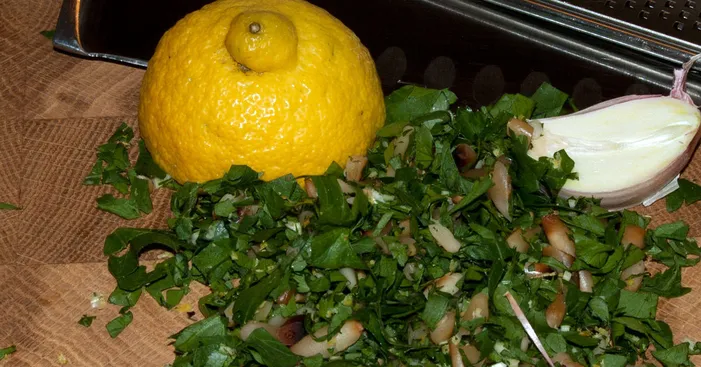
Ingredients:
- ¾ cup finely chopped Italian parsley.
- 1½ teaspoons lemon zest from a large lemon.
- 1 teaspoon grated, pressed, or minced garlic.
Preparation:
- Start by rinsing ¾ cup of parsley and wringing it out well.
- Then, with a sharp knife, remove the thick stems and cut the parsley into small pieces.
- Put it in a mixing bowl.
- Add 1½ teaspoons of grated lemon zest and 1 teaspoon of minced garlic, and gently mix.
- Serve without delay.
Gremolata is delicious with meat or fish dishes, such as boneless roast lamb or grilled haddock!
It’s also great with vegetables, like an assortment of roasted vegetables! Enjoy!
Salsa Verde:
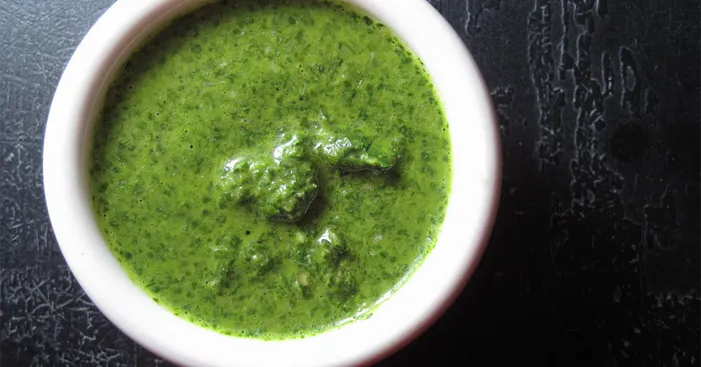
Ingredients:
- ½ cup of chopped Italian parsley.
- 30 g of white toast.
- 3 anchovy fillets.
- 1 clove of garlic
- 3 tbsps of pickled capers (30g).
- 2 tbsps pickles.
- 4 tbsps of extra virgin olive oil.
- 1 tsp of salt and ground pepper
Preparation:
- Put the bread crumbs in a bowl and sprinkle with vinegar (4 to 5 tablespoons).
- Let stand for 5 minutes, then transfer to a blender with the parsley, chopped garlic, capers, pickles, and anchovies.
- Blend in pulses, adding the olive oil gradually until you have a smooth, slightly grainy sauce.
- Adjust the consistency with a little olive oil or cold water if necessary.
- Season with salt and pepper.
- Pour the sauce into a clean jar, cover with cling film, and store in the refrigerator.
The green sauce is a mayonnaise with herbs that brings a touch of freshness and character to your dishes.
It goes very well with pot au feu, leftover chicken, or any other boiled meat.
You can also enjoy it with raw vegetables (carrots, raw beet, fennel, celery), as a dip or a dressing, with roasts, mixed salads (chicken, potatoes), steamed vegetables (fennel) or with a terrine of asparagus and ham…
This sauce can be kept in the refrigerator for several days (up to one week).
Buying parsley:
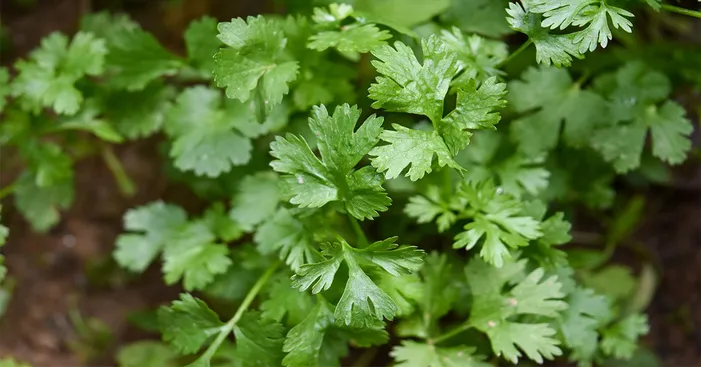
Italian parsley is an easy herb to find, whether fresh or dried.
It also grows easily and is suitable for home gardening.
Generally, fresh parsley adds a finishing touch to a dish with its texture, color, and fresh flavor.
To recognize quality parsley, you need to look at three things: the hold, the color, and the smell.
- Stems and leaves: they should be firm and not limp.
- Color: it should be a bright, uniform green, with no staining or yellowing.
- Smell: it must be fresh and pleasant, without pungency.
However, dried parsley requires much more quantity to have the same taste, but it remains the most commonly used form of this herb.
Fresh is always better but dried can be used as a stopgap.
Storing parsley:
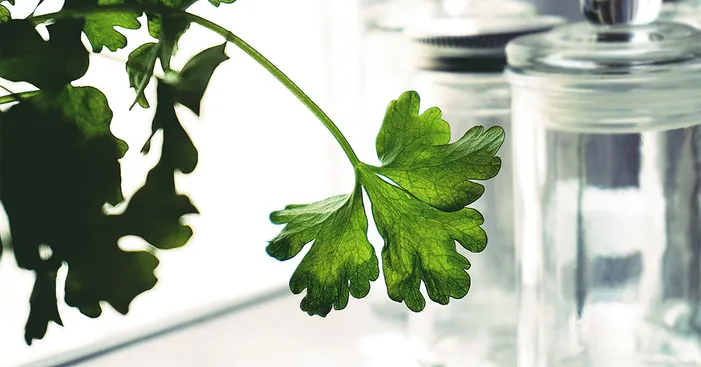
How to keep parsley cool in the fridge:
Parsley can be kept for quite a long time in the fridge, in two different ways.
Either you put it in a glass of water and put the glass in the fridge.
Or you can put the parsley in a plastic bag, close it and store it in the refrigerator in the vegetable compartment.
How to keep parsley fresh:
If you want to use parsley in the next few days, just dip it with the stems in water and keep it in the kitchen in a bright place, but not under direct light.
The parsley will stay fresh for a few days, just as if it were cut flowers!
How to keep parsley in oil:
Another method to keep parsley is to put it in oil.
To prepare, you need to wash and dry the parsley leaves, then put them in a jar and cover them completely with oil. It’s best to use a jar with an airtight seal!
Once ready, simply store the jar and keep it in the fridge.
How to store parsley in the freezer:
Parsley can also be stored in the freezer for several months!
It is a way to have it always available, especially as a reserve for the winter.
You can put it in freezer bags or a jar, either with whole leaves or already cut.
To keep parsley in the freezer, it is important to wash it carefully and dry it very well.
A clever trick is to use the ice cube tray with parsley.
Put the leaves in and add a little water, so that you can defrost them one by one whenever necessary!
